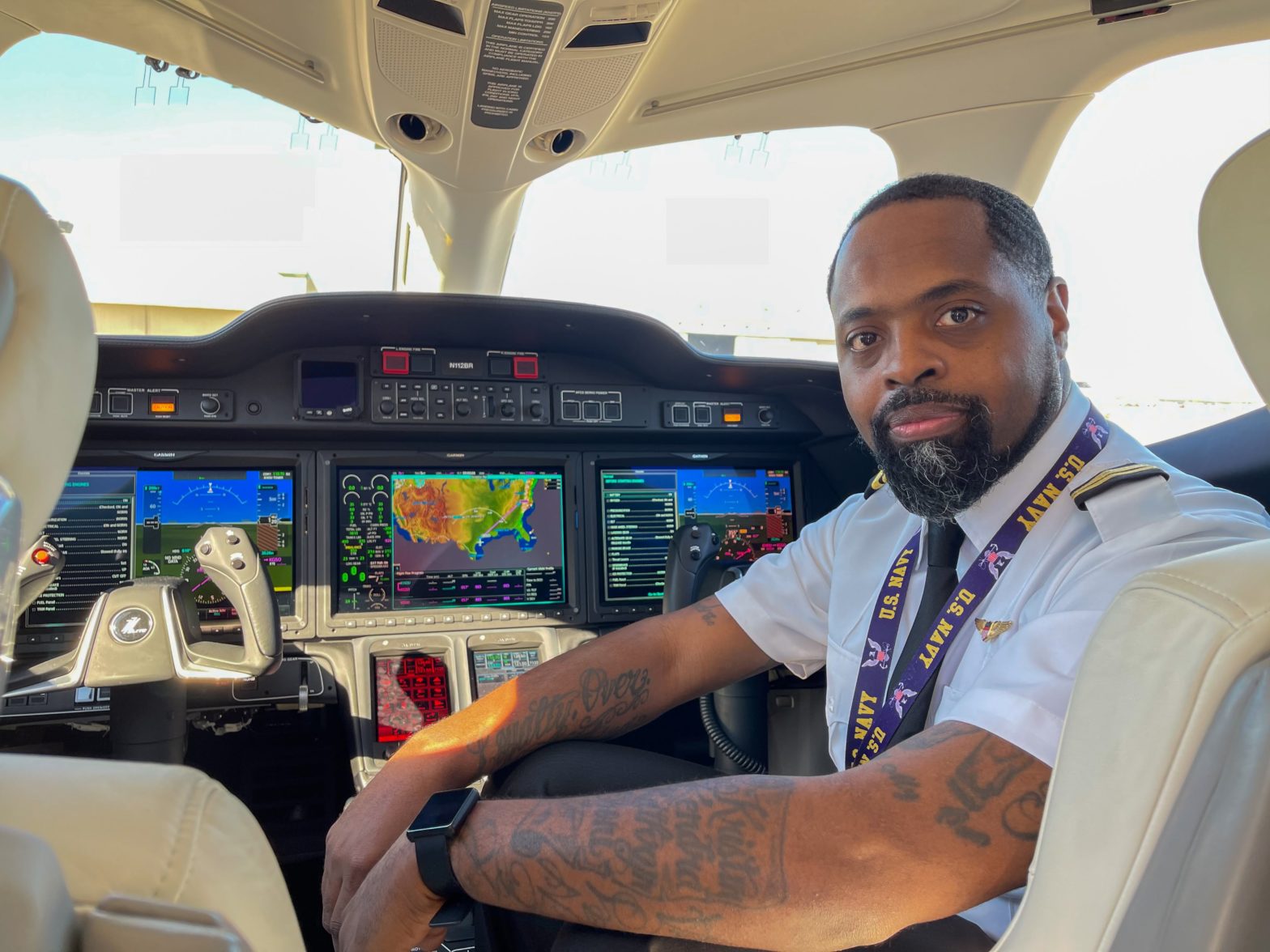Desmond Burnell fell in love with flying airplanes at 4 years old.
Growing up, he had family in both St. Louis and Indianapolis, and he and his mother would travel between the two cities often. Till this day he still remembers being a little boy peering down at the ground below from the plane windows, stricken with wonder as he soared through the clouds. After the flight, he was able to meet the pilot as he exited the plane; as he continued to have this experience on flights, his fascination with aviation grew.
At 15, his mom enrolled him in an aviation camp for minorities where he found a mentor who guided him in his career endeavors. While flying planes had always been an aspiration of his, the camp solidified that his dreams could actually be a reality.
“It was then that I realized I can actually do this thing; being a Black person I can actually become a pilot,” Burnell said.
Now a member of the Air Force Reserves and a commercial pilot for Southwest Airlines, Burnell is a part of the 3.9 percent of African-American pilots represented in the US aviation industry according to the 2021 data from the U.S. Bureau of Labor Statistics. While the number of Black pilots has increased by .5 percent since 2020, there continues to be a lack of representation for people of color in aviation.

This trend isn’t new. African-Americans have consistently been disproportionately outnumbered in the aviation and aerospace industries throughout American history. According to service data provided to FLYING, of the 14,000 active duty pilots in the US Air Force, only 2 percent of them identify as Black. In 2020, 94 percent of the American aircraft pilots identified as white, with only 5.6 percent being women and less than one percent being Black women.
The lack of Black faces in the industry is a result of many factors, including a lack of exposure to Black and brown communities where aviation careers are within reach. United Airlines Aviate Pilot Recruiter Yvonne Leggon believes children of color can only dream as big as the daily information and opportunities they are exposed to. Decades without exposure to the aviation industry have led to a deficit of diverse faces on flight decks.
“We need more Black pilots to act as guiding examples for growing Black boys and girls and show them that becoming a pilot is possible,” Leggon said. “If you can see it, you can believe it!”
Beyond exposure, a 2020 review released by the Department of the Air Force (DAF) Inspector General revealed many racial disparities between Black pilots and their white counterparts. The report showed that Black Air Force members were 72 percent more likely to receive Uniform Code of Military Justice, Article 15, non-judicial punishment. This disciplinary action can include extra duties, confinement, arrest in quarters, or forfeiture of pay for incidents of minor misconduct. Black servicemen were also 52 percent more likely to face courts-martial than white members.
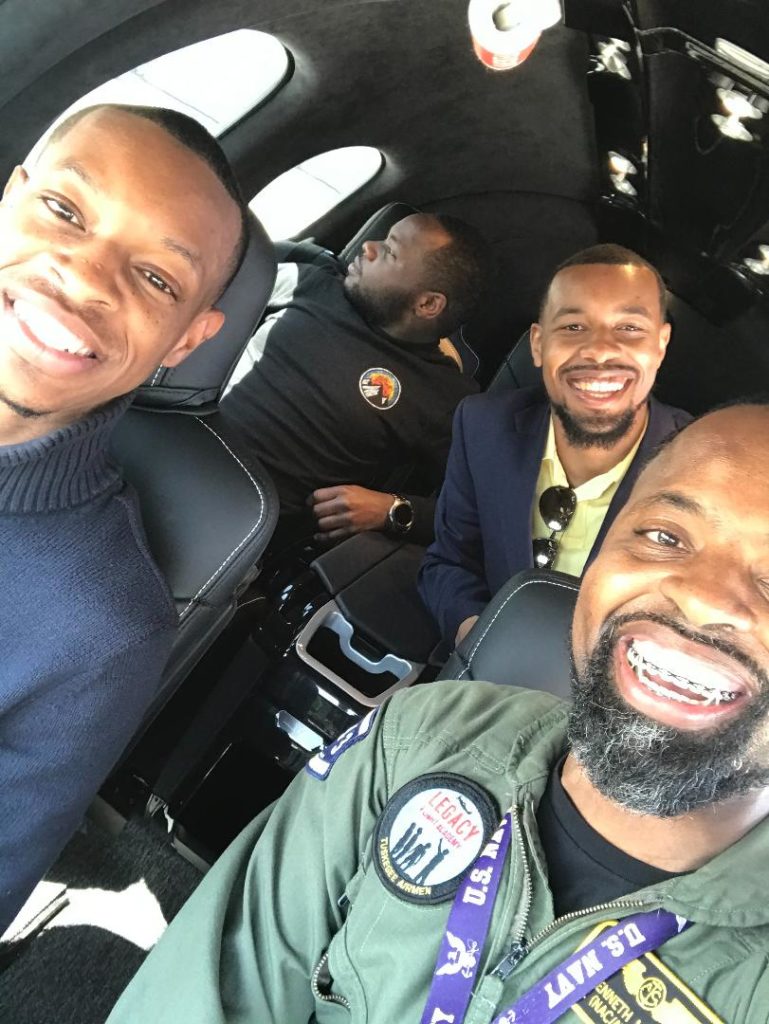
Racism against Black pilots in the US has been occurring since man took to the skies. For decades, African-Americans were shut out of the aviation industry and Black citizens had to exit the country to gain entry into the elite space. No one wanted Blacks to ever learn to fly.
Black pilots like Eugene Bullard and Bessie Coleman traveled to France to learn how to navigate the skies. It wasn’t until 1926, when the Department of Commerce licensed James Herman Banning, that the first Black pilot was licensed to fly in the US.
While Burnell says he has seen improvement in the diversification of the aviation and aerospace industries, there are a lot more strides that need to be made to ensure people of color are adequately represented at the table.
“I’ve seen them do it,” he said. “I’ve seen the numbers increase over the years and I’ve seen more of us walking around. But there’s still a lot of work to do there. We still need to increase the number of Black pilots and the amount of opportunities Black people have to get into aviation and also STEM careers.”
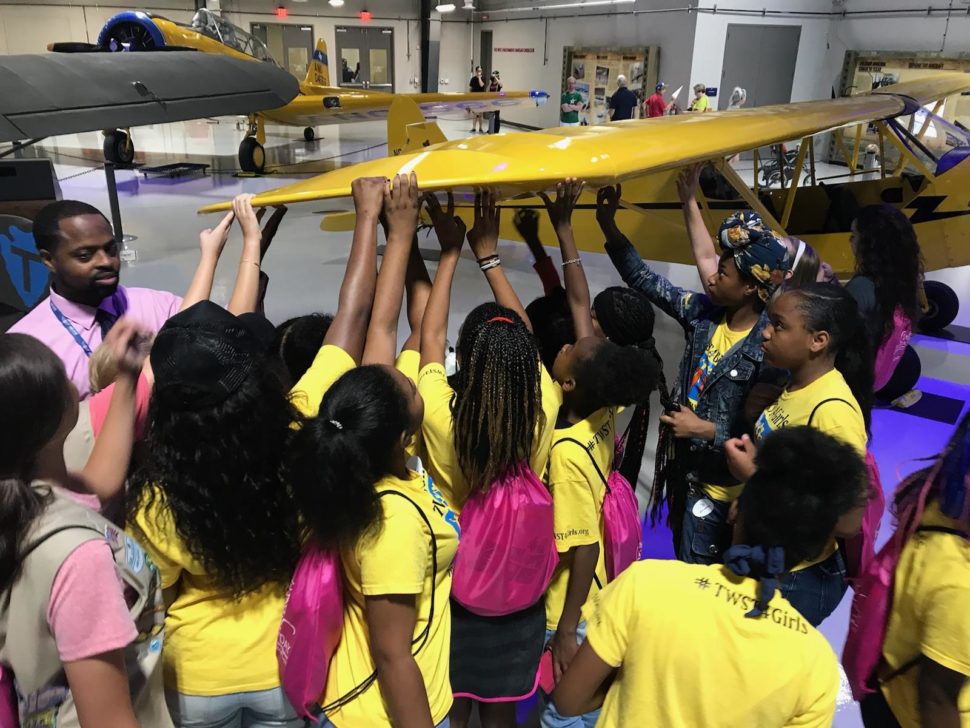
Many organizations are stepping up to bring awareness to opportunities for people of color in the industry and inspire more Black children to pursue careers as pilots and aviation professionals. In 2021, United Airlines created the United Aviate Academy, a program designed to train 5,000 new pilots by 2030, with at least half being women or people of color. Thus far, the academy has surpassed its DEI goals with 80 percent of its inaugural class being women or a person of color.
“This unprecedented training commitment will expand access to a lucrative career as a pilot, and help diversify the flight deck to better reflect the customers United serves,” Leggon said.
United Aviate is also partnering with other organizations like the Organization of Black Aerospace Professionals and Sisters of the Skies to further educate prospective aviation professionals on the opportunities available if they just reach for the skies. Leggon believes the aviation industry needs to meet the Black and brown community where they are in order to inspire students to seek opportunities beyond what they’ve seen around them in their environments.
“The statistics show that diversity in the aerospace industry is still very unequal. I think this starts with us and our community,” she said. “I believe different aviation jobs and opportunities should be better represented on student career days, especially in under-exposed neighborhoods and marginalized communities.”
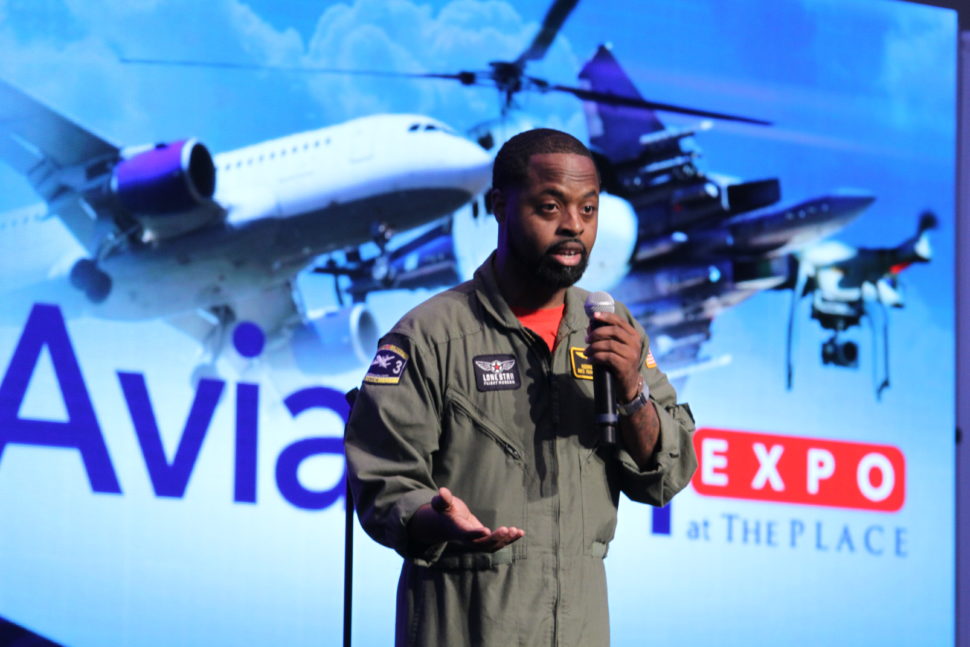
Another organization paving the way for African-Americans in aviation is the Aviation Community Foundation (ACF). Focused on providing access to industry leaders, scholarship and internship resources, and community education, ACF actively goes into communities to educate Black and brown people on the opportunities available for them in aviation. The organization visits K-12 schools, churches, universities, and community outreach events to expose attendees firsthand to aviation careers. Their affiliate program #WeFlyHigh aims to bring together affinity groups all with the common goal of diversifying the industry.
ACF Executive Director and commercial pilot Kenneth Morris believes there are many rewarding opportunities for African-Americans in aviation. A US Navy Veteran, Morris agrees that many factors, including a lack of positive role models, current and relevant information, a blueprint for success, and a solid industry support system provide a huge barrier to entry for many Black and brown individuals.
“People of color and women have been the smallest percentage of the aviation and aerospace for more than 100 years,” Morris said. “Providing more inclusive recruiting and professional development opportunities are advantageous not only to the aspiring pilots and aviation professionals but it taps a market that was previously overlooked for decades by the larger companies in aviation.”
Morris says Black pilots provide not only a high-quality and in-demand skillset but that they also bring a strong work ethic and sense of pride to an industry dominated by white males. He believes companies should be encouraged to develop more Black pilots because it is the only way to bring more innovation and creativity into the space.
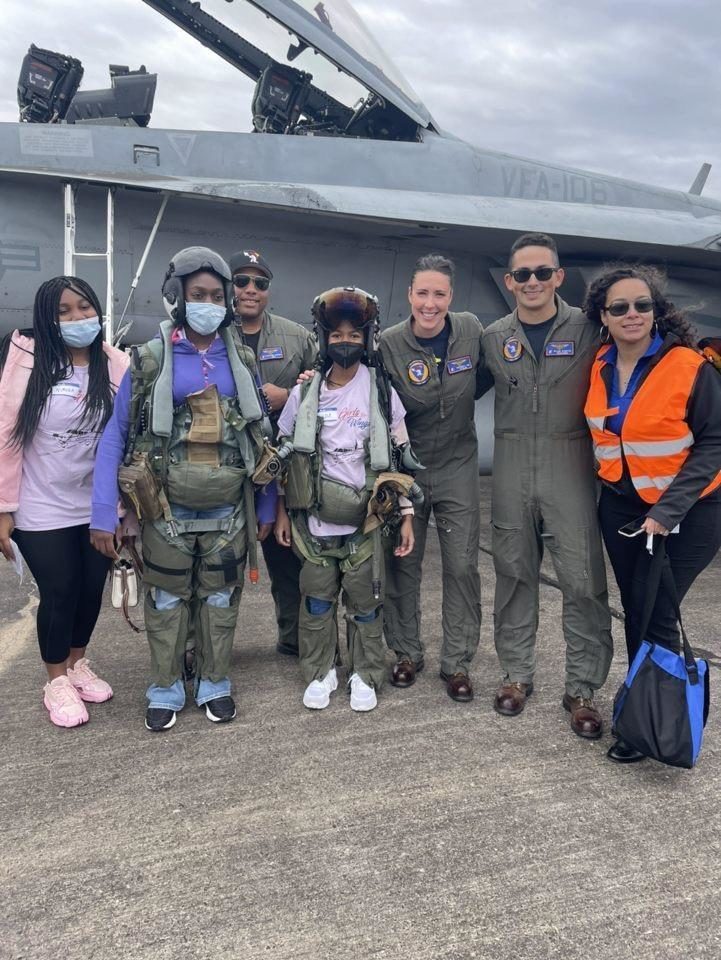
“A forward-thinking and more accepting, tolerant, and culturally conscience company will have the privilege of receiving new ideas, different perspectives, and input from more than one demographic,” he said. “Some of the most profitable hedge funds and financial portfolios are quite diverse; where one may not perform so well, the others exceed – the same thought process can and should be applied with people.”
It is clear that is it time for a change in the aviation and aerospace industries. The time when Black and brown faces only occupied a small percentage of pilots in the skies is coming to an end and folks are demanding a space where representation and action co-exist. For Burnell, this means acknowledging and recognizing the rich history of Black pilots and encouraging more African-American youth to look beyond the horizon as they sculpt their own futures.
“After every flight I do at the airlines, I make sure I stand right front and center telling people goodbye because I want them to see it,” Burnell said. “I want them not only us to see it but I want everyone to see that yes, black people do fly planes too.”
Leggon also encourages African-Americans to research the aviation possibilities in proximity to their homes. Many people don’t realize flight schools and aviation museums are right in their own neighborhoods where they can learn more about flying planes and aviation history.
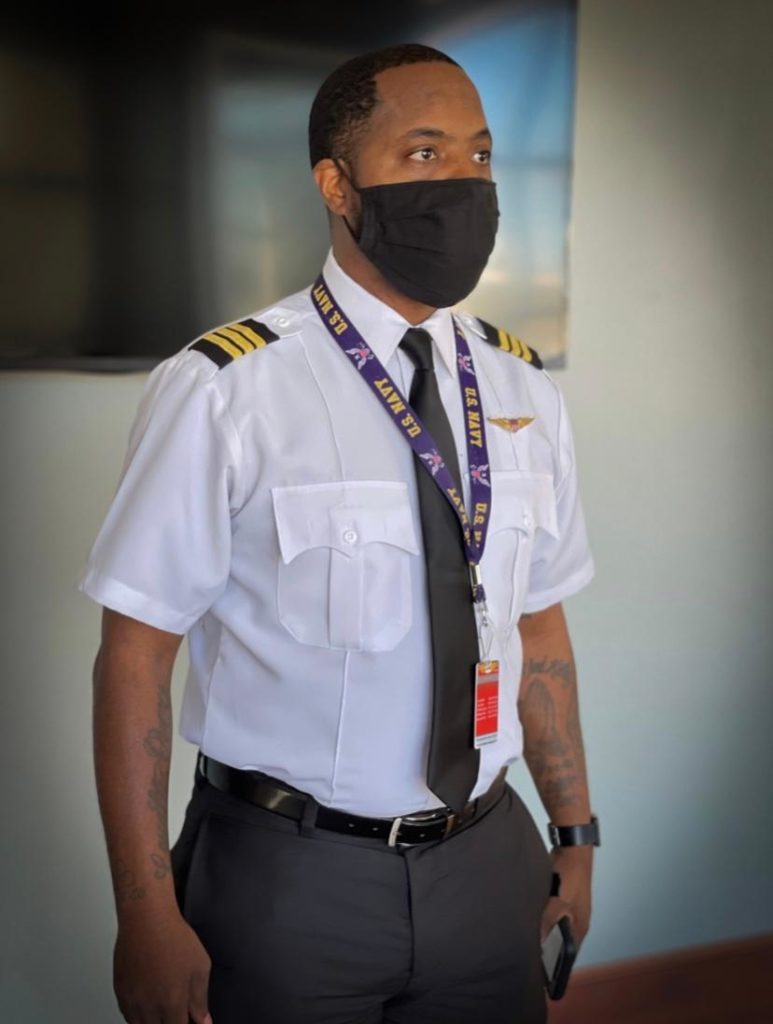
“I encourage everyone to at least check out some flight schools in their area and take a discovery flight,” she said. “Many of these flight schools are only one visit away from realizing a dream in aviation.”
While progress has been made, the aviation industry has a long way to go when it comes to diversity and inclusion. Its foundation was built on years of isolation; preventing many minorities from entering its ranks not only as pilots but in other industry positions as well. Despite this disparity, African-Americans in aviation are not discouraged. Instead, they are writing a new legacy of the history of Blacks in the sky and opening the floodgates for more people of color to sit behind the cockpit.
“We are no longer trying to move their needle; we have created our own and writing the positive narrative as we see fit,” Morris said.
